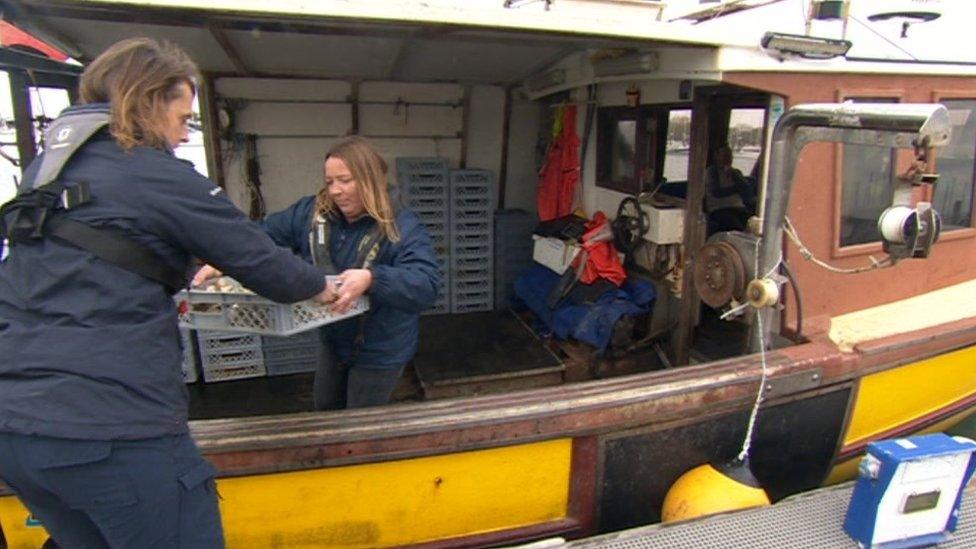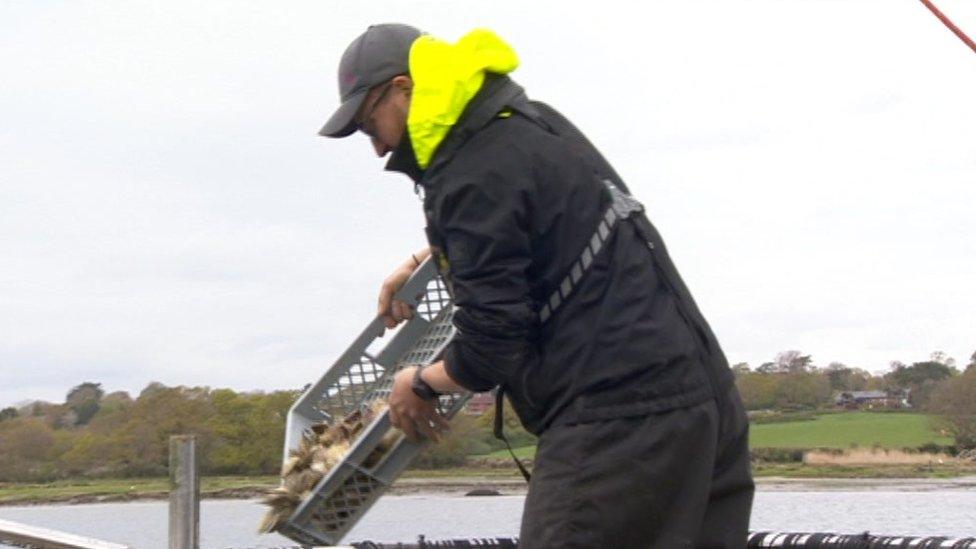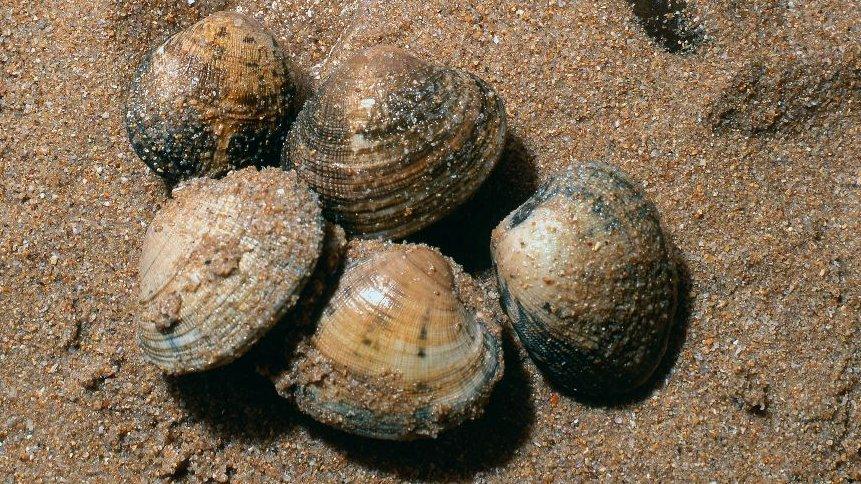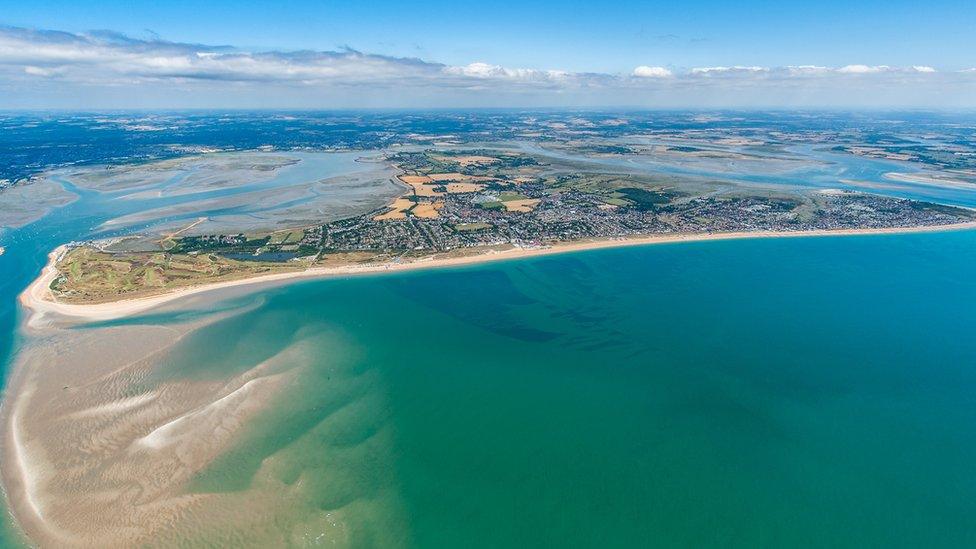Thousands of oysters reintroduced to River Hamble
- Published

A five-year scheme is under way to reverse the loss of the oyster fishery industry in the area
About 15,000 oysters have been reintroduced to a river in order to restore marine habitats.
The new habitat is being created in the Swanwick bend of the River Hamble in Hampshire as part of the £5m Seascape Project.
A five-year scheme is under way to reverse the loss of the oyster fishery industry in the area, which was once the largest in Europe.
Project manager Louise MacCallum called it an "exciting day".
Earlier in the month 468 tonnes of gravel and cockleshell was laid on 2,500 sq m (8,202 sq ft) of the river bed to form a reef for the new oyster bed.
The number of oysters in the area has massively declined in the past decade because of poor water quality, competition from invasive species, disease and overfishing.

The number of oysters in the area has massively declined in the past decade
Ms MacCallum, who works for the Blue Marine Foundation, helped reintroduce 14,939 oysters from a fishing boat on the river earlier.
The plan is to eventually reintroduce 30,000.
She told the BBC: "Today we finally got to lay the oysters on the top of the foundations of the reef that we built a couple of weeks ago."
She added: "The numbers of oysters has crashed. There's very few of them left. They provide the most amazing ecosystem services.
"They improve water quality, they stabilise the sediments… they really enhance biodiversity so lots of other species of animals and plants want to come and live beside them."

The new habitat is being created in the Swanwick bend of the River Hamble
Dr Joanne Preston, a marine biologist at the University of Portsmouth, added: "This is about putting nature back together.
"We wanted to restore ecosystems that used to be in the Solent, and in fact all round the UK. There used to be oysteries round the UK the size of Wales."
The European flat oysters, which are native to the area, were transported from South Wales.
The Hamble reef is the second site created as part of the scheme following a similar reef created in Langstone Harbour, between Portsmouth and Hayling Island, where a 1,000 sqm (3,280 sq ft) oyster reef was restored.

Follow BBC South on Facebook, external, Twitter, external, or Instagram, external. Send your story ideas to south.newsonline@bbc.co.uk, external.
Related topics
- Published20 April 2023

- Published12 December 2022
